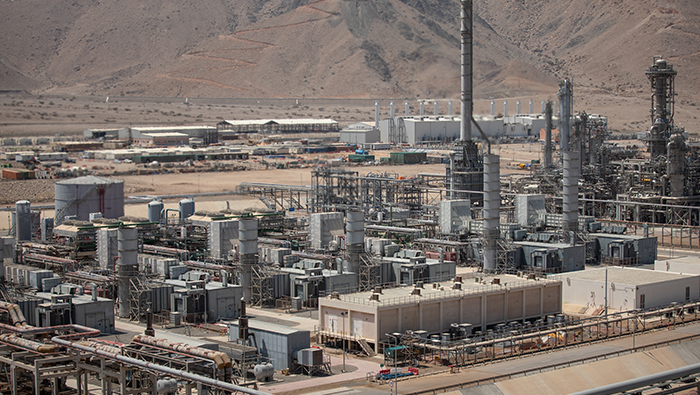
MUSCAT: Oman’s Ministry of Energy and Minerals signed five agreements in 2023 relating to the mining sector specialising in exploration of potash and nickel ores in various locations.
“The total amount of mineral raw materials sold was approximately 64.5 million tonnes, as the amount of sales of limestone, gypsum and plastic material increased by 3 million tonnes,” the ministry said in its annual report.
The total production of mineral raw materials during the year 2023 was about 70.4 million tonnes, a decrease of 7 percent compared to the year 2022. The amount of production of building materials decreased by about 9 million tonnes, constituting 60 percent of the total production.
The report said that these decreases were due to the delay of mining companies in submitting their monthly production reports. The total number of mining licences issued in 2023 reached 8, while the exploration licences issued amounted to 12.
The number of main regions for renewable energy reached seven regions, namely: Dhofar, Duqm, Al-Jazar, Manah, Ibri, Sur and Musandam, and 6 agreements were signed to produce green hydrogen in the Duqm, Dhofar, and Al-Jazar regions.
The total production of electrical energy in 2023 reached about 44.4 terawatt-hours, an increase of 6.4 percent compared to the previous year, which was estimated at 41.7 terawatt-hours. Nearly 2 terawatt-hours of electrical energy were produced through renewable energy sources, representing an increase of 5 percent over the previous year.
Companies in Oman’s oil and gas sectors drilled, tested and evaluated 63 exploratory and appraisal wells for oil and 15 for gas during 2023, according to the annual report of the Ministry of Energy and Minerals.
This includes some wells that were previously drilled and underwent testing and evaluation this year.
The report also indicated that the results of petro-physical analysis and well productivity tests resulted in positive indicators in a number of them, and some wells were linked to the production line and handed over to the post-exploration stage of development, which resulted in the addition of new oil and gas reserves.
The total reserves of crude oil and oil condensates expected by the end of 2023 amounted to about 4,971 million barrels, an increase of one percent compared to 2022. While the total expected natural gas reserves of the Sultanate of Oman by the end of 2023 amounted to about 23 trillion cubic feet, lower by 5 percent expected in 2022.
The number of companies operating concession areas in the field of oil and gas exploration and production by the end of 2023 in 36 concession areas reached 18.
Total oil exports of crude oil and oil condensates during the year amounted to about 310 million barrels. China ranked first among the countries importing Omani oil, amounting to 92 percent.
The average daily production of crude oil and oil condensates in the Sultanate of Oman during the year 2023 was 1.05 million barrels, compared to 1.06 million barrels per day in 2022, a slight decrease of 1.5 percent from the previous year. While total oil exports of crude oil and oil condensates during 2023 reached about 310 million barrels.
The Sultanate of Oman’s average production of natural gas during the year 2023 was about 142.5 million cubic metres per day, with a rate of 30.1 million cubic metres per day of associated gas production and 112.4 million cubic metres per day of non-associated gas production. Natural gas production increased by 4 percent compared to 2022.
The average price of Omani crude oil decreased by 14 percent during the year 2023, reaching about $82.3 per barrel. The price of a barrel of Omani oil ranged between a minimum of $74.8 per barrel in August 2023 and a maximum of $92.8 per barrel in November of the same year.